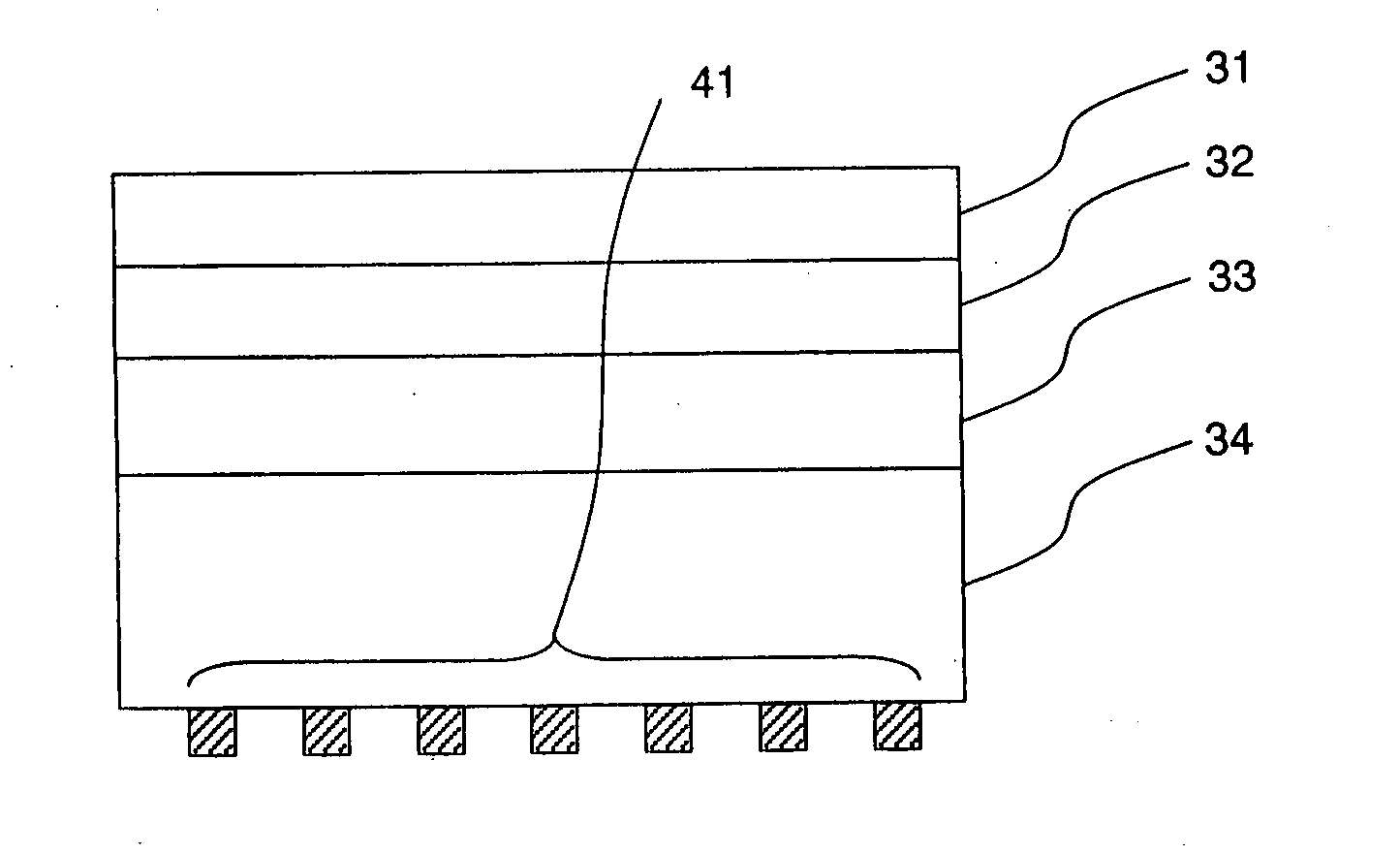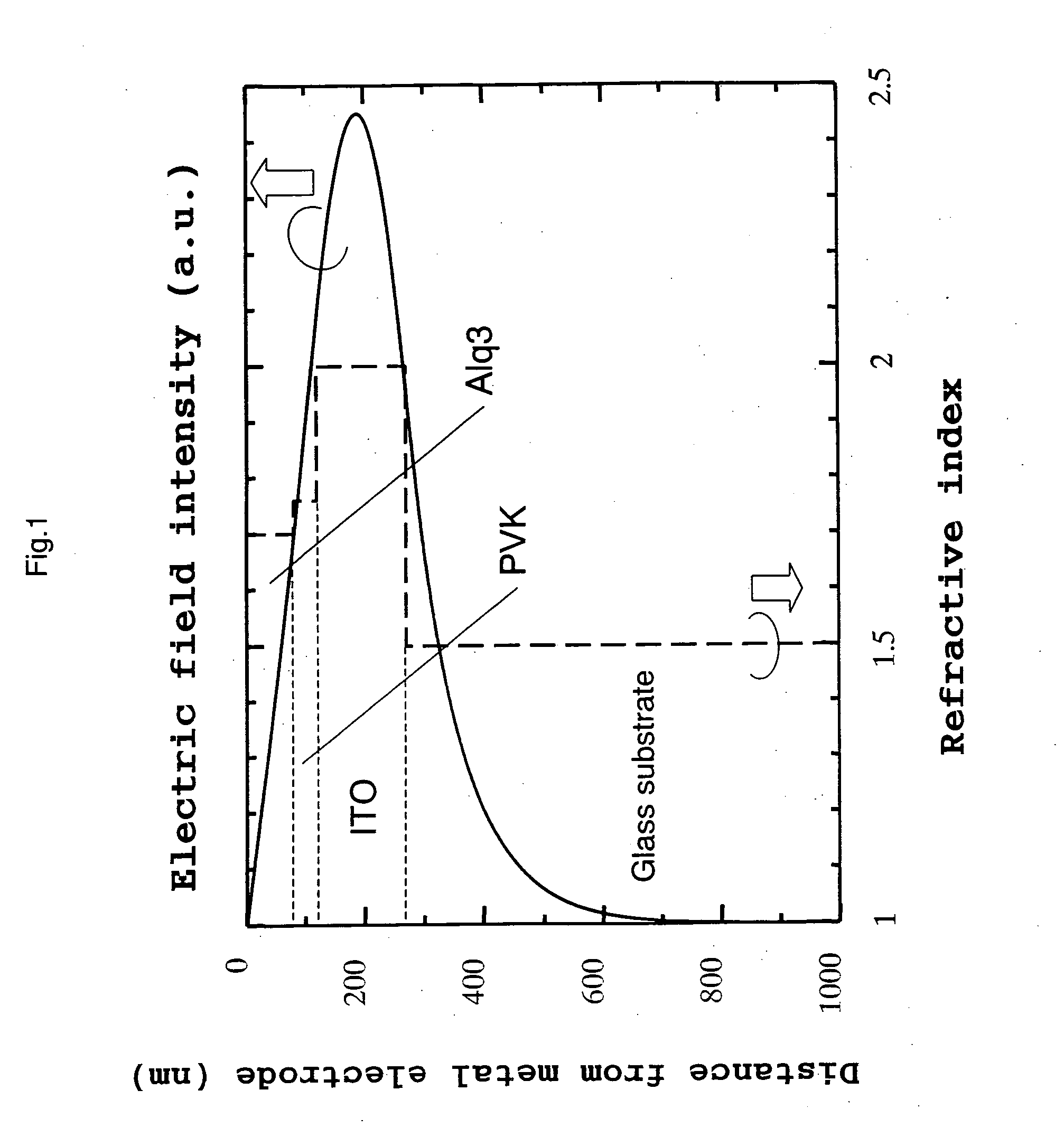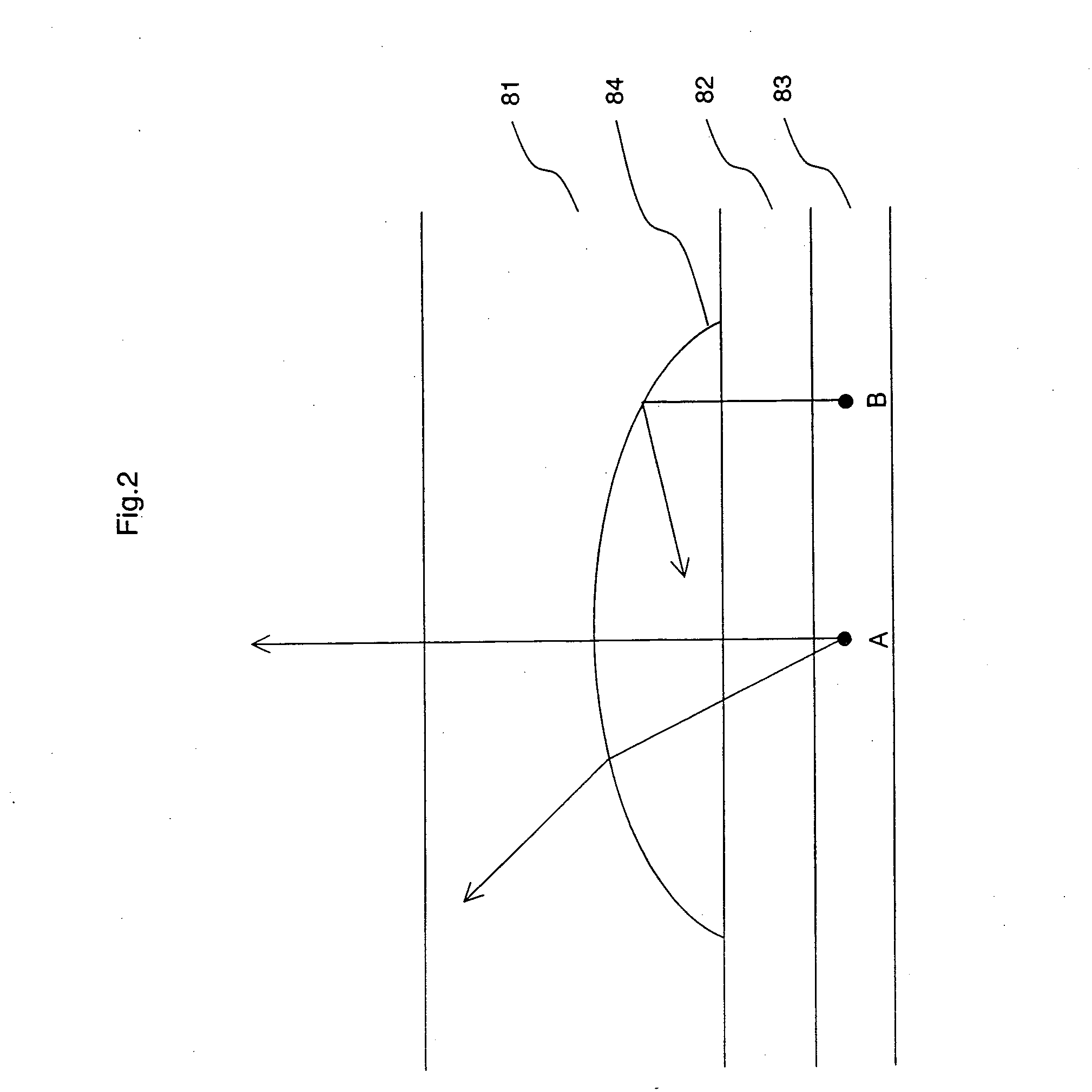Light-emitting device and organic electroluminescence light-emitting device
a light-emitting device and electroluminescence technology, applied in the field of light-emitting devices, can solve the problems of difficult to achieve the refractive index distribution and to completely prohibit the propagation, and achieve the effect of improving the light extraction efficiency of the light-emitting devi
- Summary
- Abstract
- Description
- Claims
- Application Information
AI Technical Summary
Benefits of technology
Problems solved by technology
Method used
Image
Examples
Embodiment Construction
[0161] An embodiment of the invention is explained below with reference to the accompanying drawings.
[0162] As a mode conversion means for converting the waveguide mode to the radiation mode, an example of the optical structure having a regularity of a refractive index distribution on the one-dimensional direction. In FIG. 4, numeral 22 denotes a waveguide mode, 23 a radiation mode, 25 an optical structure and 41 a mode conversion means. In FIG. 4, the optical structure 25 is arranged in the one-dimensional direction (horizontal direction in FIG. 4) as the mode conversion means 41. The refractive index of the optical structure 25 is set different from the refractive index of a material having no optical structure 25.
[0163] In the case where the optical structure 25 is arranged with such a period as to suppress the propagation of the light in the waveguide mode 22, the waveguide mode 22 is converted into the radiation mode 23 and radiated outside. The provision of this mode convers...
PUM
| Property | Measurement | Unit |
|---|---|---|
| refractive index | aaaaa | aaaaa |
| refractive index | aaaaa | aaaaa |
| light emission wavelength | aaaaa | aaaaa |
Abstract
Description
Claims
Application Information
 Login to View More
Login to View More - R&D
- Intellectual Property
- Life Sciences
- Materials
- Tech Scout
- Unparalleled Data Quality
- Higher Quality Content
- 60% Fewer Hallucinations
Browse by: Latest US Patents, China's latest patents, Technical Efficacy Thesaurus, Application Domain, Technology Topic, Popular Technical Reports.
© 2025 PatSnap. All rights reserved.Legal|Privacy policy|Modern Slavery Act Transparency Statement|Sitemap|About US| Contact US: help@patsnap.com



